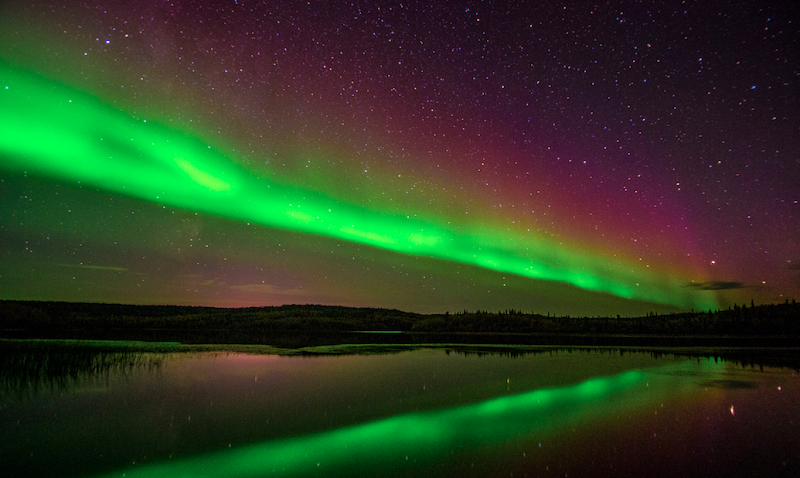
Folk on the Rocks: Yellowknife’s Dynamic Festival Experience
Folk on the Rocks brings together vibrant music and the wild beauty of Yellowknife’s Long Lake. This festival combines accessible outdoor adventure with cultural richness, offering a practical yet exhilarating experience for all visitors.
Wear Durable Footwear
The terrain around Long Lake is mixed, with gravel, roots, and occasional mud patches, so shoes with solid grip and ankle support are essential.
Stay Hydrated Through the Day
The combination of physical activity and sun exposure can dehydrate you quickly; carry at least 2 liters of water and refill at available stations.
Arrive Early for Best Parking
Parking near the festival site fills early. Getting there ahead of the crowds saves time and energy for the day’s activities.
Prepare for Variable Weather
Temperatures can swing from warm days to cool evenings; layering clothing ensures comfort throughout the event.
Folk on the Rocks: Yellowknife’s Dynamic Festival Experience
Folk on the Rocks isn’t your typical music festival tucked away in the wilderness — it’s a vibrant expression of community and culture set against the fierce backdrop of the Northwest Territories. Held on Long Lake in Yellowknife, this annual event stretches over several days, drawing visitors with its diverse lineup of folk, rock, and indigenous music that seems to echo off the ripples of the lake itself. The festival’s location, just a short drive from Yellowknife’s core, means you’re immersed in nature’s pulse without sacrificing accessibility or comfort.
Despite its easy approach, Folk on the Rocks presents its own challenges — the rugged shores invite exploration but demand respect. The terrain around Long Lake combines gravel paths and forested patches where roots push through the earth, seemingly daring your boots to hold firm. Expect to walk up to 3 kilometers from established campsites or parking to the main stages, with gentle elevation changes that reward each step with increasingly sprawling views of the shimmering waters and boreal trees standing tall, like attentive audience members.
Hydration is crucial; the combination of outdoor dancing and walking under the summer sun can drain reserves faster than you expect. Sturdy, broken-in footwear is your best ally against unexpected dips or uneven footing, especially if you plan to take in the full festival circuit or explore surrounding trails before or after the music fades.
Timing your visit to early July maximizes your experience. Days stretch long under the midnight sun’s watchful eye, giving you ample daylight to navigate the festival grounds, catch impromptu jams, and soak in the atmosphere. Evening breezes off Long Lake carry the songs towards the crowd, wrapping the entire event in a natural soundscape the loudest amplifier could never replicate.
Folk on the Rocks is more than a music festival; it’s an engagement with land fiercely itself — where cultural roots run deep and nature demands your attention. Whether you’re here for the music, the community, or to challenge yourself with outdoor exploration between sets, this event offers a distinct and practical adventure. Come prepared, stay curious, and let the landscape and sounds guide your steps.
Nearby Trips
All Adventures
Boat Charters
Water Activities
Adventures near Yellowknife, Northwest Territories
Discover the unique and memorable adventures that make Yellowknife, Northwest Territories special.
Frequently Asked Questions
How far is the walk from parking to the main festival area?
The walk ranges from 1 to 3 kilometers depending on where you park or camp, generally over well-marked paths with some mild elevation changes.
Are there options for camping near Folk on the Rocks?
Yes, multiple designated campsites are nearby, offering basic amenities. Early booking is recommended as spots fill quickly during the festival.
What kind of wildlife might I encounter around Long Lake?
Visitors commonly spot local birds like loons and ravens; small mammals such as squirrels and occasionally foxes venture near festival grounds but tend to avoid crowds.
Is the festival suitable for families or solo travelers?
Absolutely. The event welcomes all ages with family-friendly activities and safe, open spaces. Solo travelers often find easy ways to connect through workshops and communal spaces.
Are there local cultural elements incorporated into the festival?
Yes, indigenous musicians and artists play a vital role, sharing stories and traditions that enrich the festival’s connection to Northern heritage.
What environmental practices does the festival follow?
Folk on the Rocks actively promotes waste reduction, recycling, and respecting the natural environment, encouraging visitors to leave no trace and protect the delicate ecosystem.
Recommended Gear
Sturdy Hiking Shoes
Essential for protecting feet on mixed terrain and providing good traction over roots and gravel.
Reusable Water Bottle
Critical for hydration; refill stations are available but bring enough capacity to stay hydrated throughout the day.
Layered Clothing
Lightweight layers allow adjustment to warm days and cooling evenings, keeping you comfortable at all times.
Bug Spray
Mosquitoes and black flies can be relentless; effective insect repellent improves comfort substantially.
Local Insights
Hidden Gems
- "The rocky lookout just northeast of the main stage offers panoramic views of Long Lake, perfect for quiet reflection away from crowds."
- "Small inlets along the lake’s edge where water meets forest provide unexpectedly peaceful spots for birdwatching."
Wildlife
- "Common loons on the lake, their calls piercing the quiet evening air."
- "Migratory birds in late spring and early fall, including warblers and hawks."
History
"Folk on the Rocks has been a cornerstone of Yellowknife’s cultural calendar since the mid-1980s, originally created to celebrate northern musical talent and community resilience through long winters."
